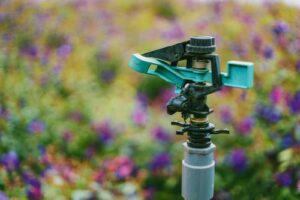Water management can make or break a field, lawn, or orchard. Too little moisture leaves roots gasping; too much drowns them and drains your budget. That balance is why growers and property owners lean on irrigation systems to stay in control. Before installing one, however, you need a clear picture of the financial side—today’s price tag and tomorrow’s payoff.
The sections below walk through the upfront expense, the expected return, and the lasting advantages that turn an irrigation plan into a smart, long-term investment.
Upfront Costs: What to Expect When Installing Irrigation
Every system starts with a bill for gear and labor. Pumps, pipes, sprinkler heads, timers, or soil-moisture gauges form the backbone, and their price rises with acreage. A backyard patch might need only a modest kit; a citrus grove or sports complex demands sturdier parts and far more of them.
Professional installation adds another line item, covering trench work, water-source connections, and the expertise that prevents mistakes. While the total can appear steep, viewing these dollars as seed money for higher efficiency—and fewer water worries—puts the spending in perspective.
Calculating ROI: How Irrigation Pays Off Over Time
Once the valves open, the real savings begin. Precise water delivery cuts waste, nurtures stronger plants, and lifts yields, which can push revenues higher for farmers and landscapers alike. Smaller water bills and leaner maintenance costs follow close behind.
Many operators recoup their outlay within a handful of growing seasons, especially in regions with unpredictable rain or escalating utility rates. Better harvests, steadier turf quality, and lower overhead combine to turn the initial spend into profits that repeat year after year.
Long-Term Benefits: Beyond Just the Numbers
Financial gains are only part of the story. Reliable irrigation helps curb soil erosion, limits runoff, and reduces the chance of mildew or root disease. Healthier soil supports consistent production and a resilient ecosystem, even when droughts or sudden storms arrive.
Because moisture is metered instead of guessed, crop stress declines and planning becomes simpler. For anyone whose livelihood relies on the land, that stability brings confidence and the freedom to focus on growth instead of damage control.
Choosing the Right Tools: Saving Money and Water Smartly
Equipment choices decide how well the system performs. Components should match the site’s size, slope, and plant mix. A sturdy industrial hose can move large volumes without leaks or pressure loss, while quality valves, filters, and emitters ensure water reaches its target and nowhere else. Routine upkeep—flushing lines, cleaning screens, swapping worn parts—keeps everything efficient and extends service life.
Cutting corners on materials may look thrifty at checkout, but it often leads to bigger repair bills down the road. Selecting dependable gear from the start and then fine-tuning settings as you learn delivers the double reward of lower waste and smoother operation.





Leave a Reply